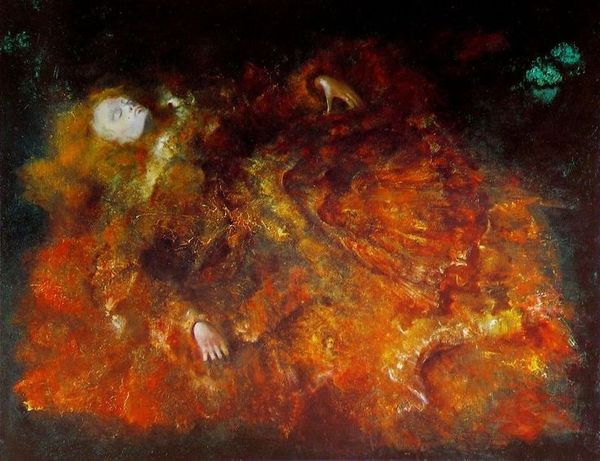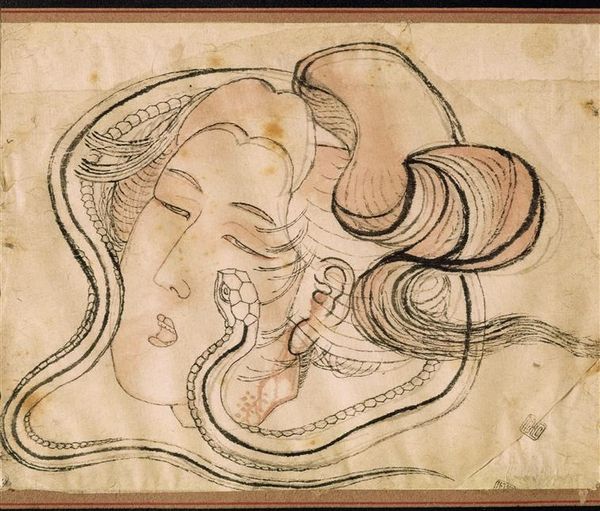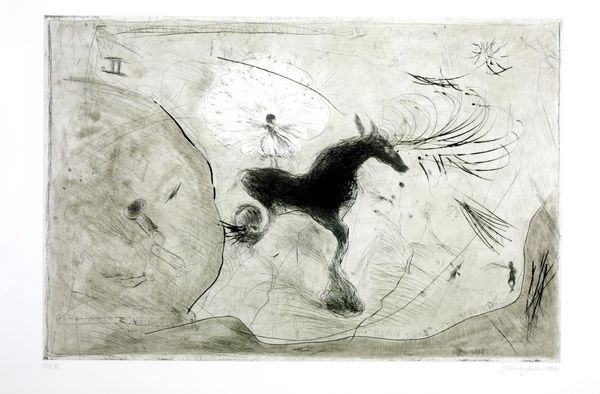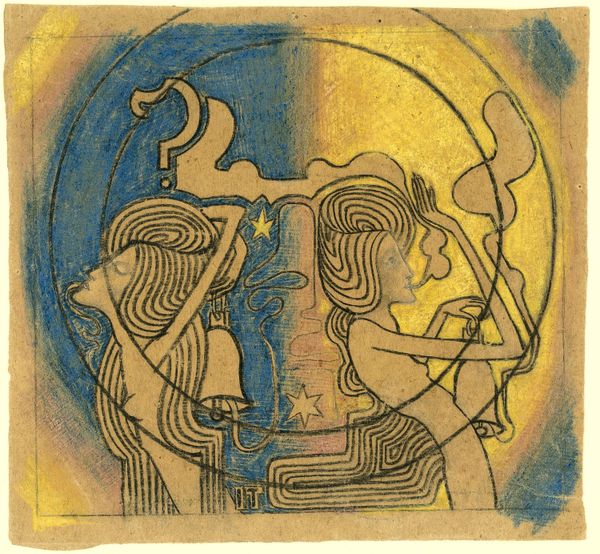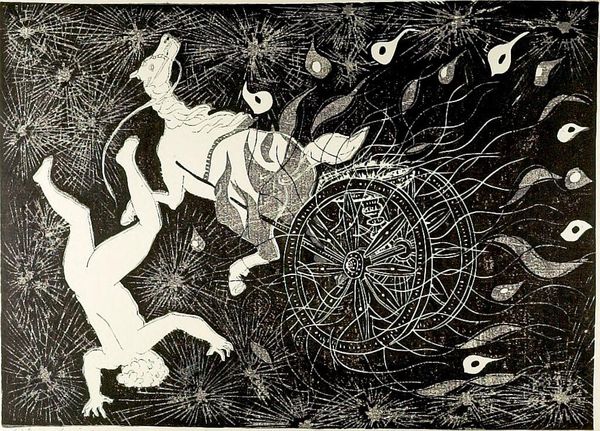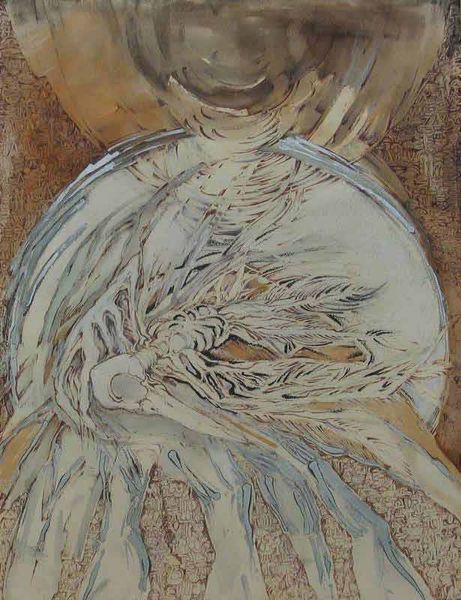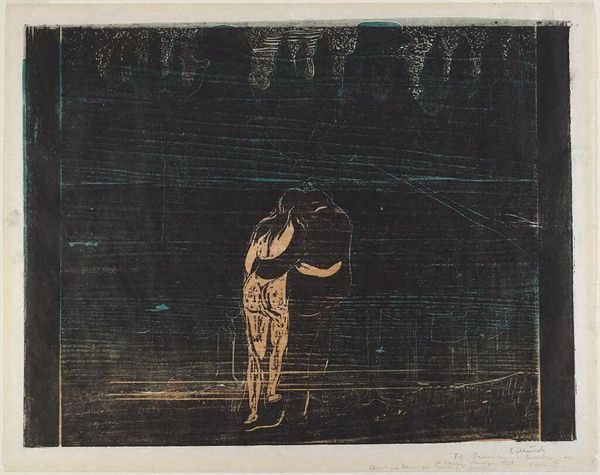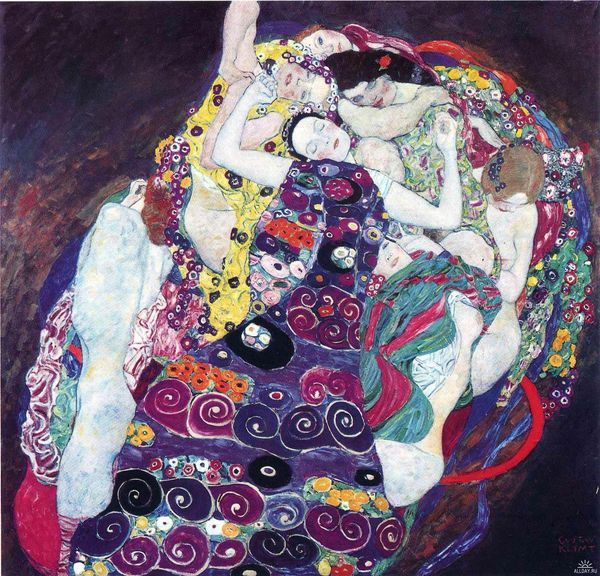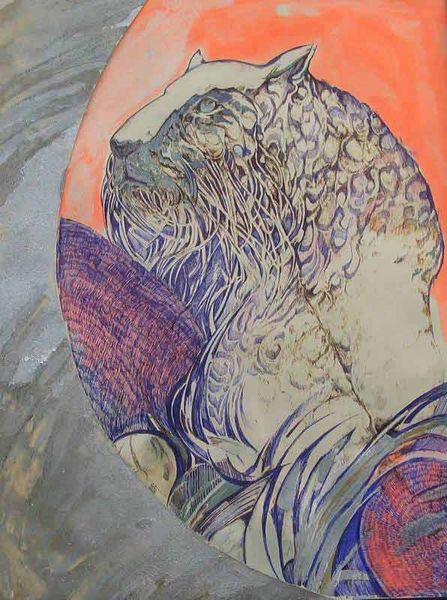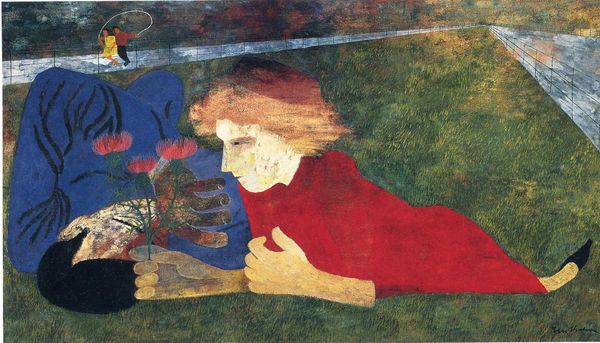
drawing, coloured-pencil, paper, pencil, pastel
#
portrait
#
drawing
#
art-nouveau
#
coloured-pencil
#
glasgow-school
#
fantasy-art
#
figuration
#
paper
#
form
#
pastel chalk drawing
#
pencil
#
line
#
symbolism
#
pastel
#
watercolor
Copyright: Public domain
Editor: So, this is Frances Macdonald’s "Girl and Butterflies," made in 1907 with coloured pencils, pencil, and pastel on paper. It gives off such an ethereal and dreamlike feeling, with that central figure and all those swirling lines and pale colors. How do you interpret this work, especially considering its historical context? Curator: What I find most striking is how Macdonald subverts the traditional Victorian representation of women. This isn't simply a decorative image, but a powerful assertion of female agency. Consider the Symbolist movement prevalent at the time, which Macdonald was a part of. They often used female figures to explore themes of spirituality and the subconscious. How does the depiction of the girl and the butterflies relate to those ideas, in your opinion? Editor: I see how the butterflies could symbolize transformation and the girl’s connection to the natural world, almost a rebellion against societal constraints. But the somber tones and her introspective gaze… is there also a sense of melancholy? Curator: Precisely. Macdonald’s work, along with her sister Margaret, often addressed the constraints placed upon women, their artistic aspirations stifled by a patriarchal society. Does seeing the artwork through that lens alter your initial impression? Editor: Absolutely! It makes me think about the Pre-Raphaelite Brotherhood's obsession with tragic female figures, but this feels different. More intimate and less overtly dramatic. There's a quiet strength in the girl's stillness. Curator: Macdonald was a vital, though often overlooked, force within the Glasgow Style movement, constantly challenging conventional narratives through her art. Hopefully this reading sheds light on the work’s multi-faceted nature, reflecting both constraint and a desire for liberation. Editor: I agree. I never really thought about how much context could influence my reading of an image! It shows how important it is to really dive deep into the lives of the artists and understand the world in which they worked.
Comments
No comments
Be the first to comment and join the conversation on the ultimate creative platform.



